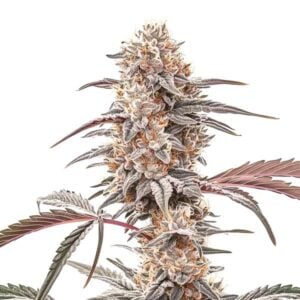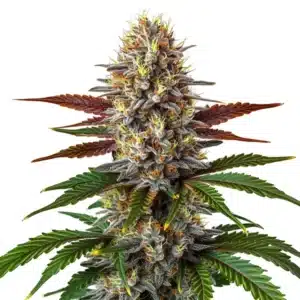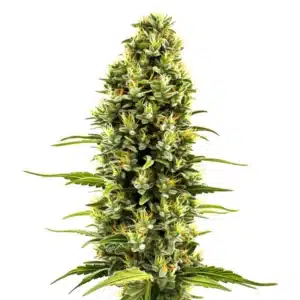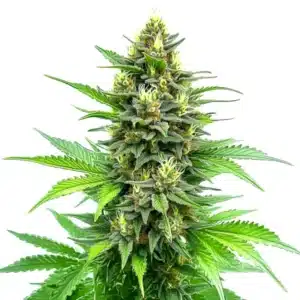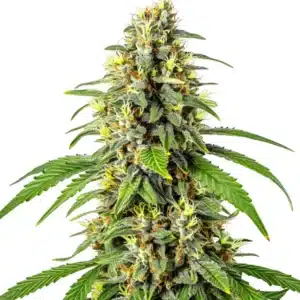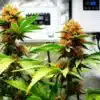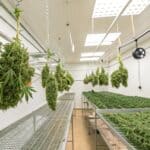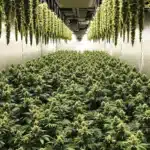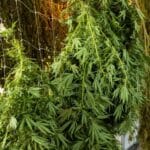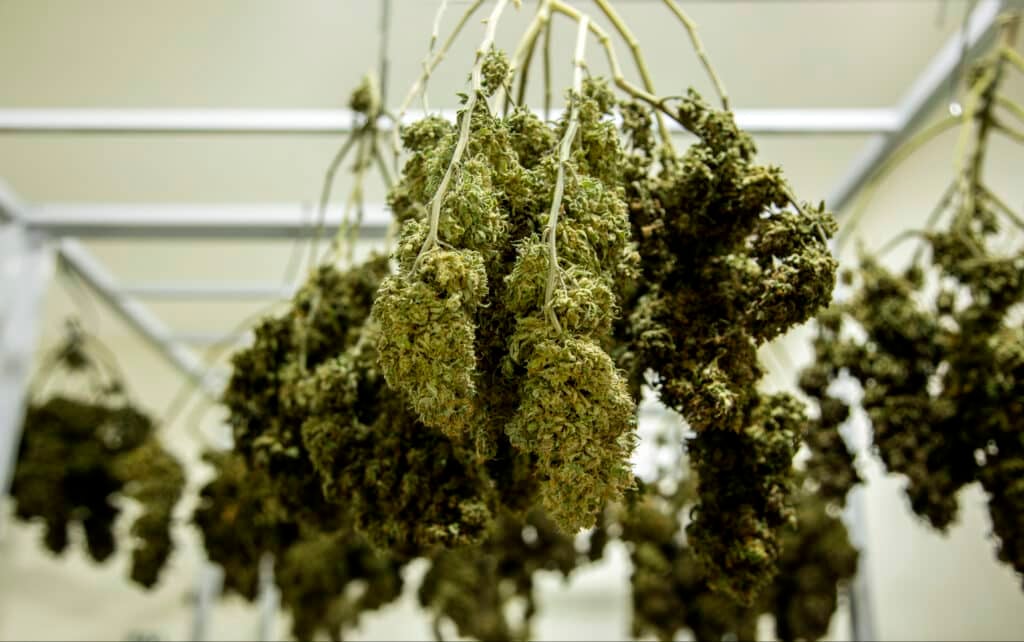
Drying Cannabis Outdoors
Growing cannabis outdoors has numerous advantages, from natural sunlight to vast space for plant growth. However, one of the most crucial steps comes after you’ve harvested your plants: drying them properly. Knowing how to effectively dry your cannabis will help preserve both flavor and potency, ensuring a fulfilling experience for consumers. Let’s explore the essential tips and techniques for drying your cannabis outdoors effectively.
In this article, we’ll share practical advice on how to navigate the outdoor drying process, focusing on the importance of optimal conditions and techniques. Whether you’re a novice gardener or a seasoned expert, understanding these elements can make all the difference in the quality of your final product.
Recommended Strains
Biscotti
|
|
THC | 25% - 30% (High) |
|
|
Type | Feminized |
|
|
Yield | Medium |
|
|
Phenotype | 80% Indica / 20% Sativa |
Biscotti Mintz
|
|
THC | 22% - 25% (Medium) |
|
|
Type | Feminized |
|
|
Yield | High |
|
|
Phenotype | 80% Indica / 20% Sativa |
Why Drying is Important
Drying cannabis is a crucial part of the post-harvest process that shouldn’t be overlooked. Proper drying decreases moisture in the buds, which in turn prevents mold while preserving the plant’s intricate cannabinoid profile. If done right, well-dried cannabis not only promotes a smooth smoking experience but enhances the overall flavor. Imagine savoring those subtle notes and aromas that can sometimes be lost with inadequate drying.
Cannabis plants at harvest typically contain around 75% to 80% moisture. If this moisture isn’t removed effectively, it can lead to issues such as mold or degradation of the flowers. Aim for moisture levels of about 58% to 62% for optimal curing and enjoyment of your plants later.
Promos & Deals
Outdoor Drying Conditions
Drying cannabis outdoors is both a challenge and an opportunity. Outdoor conditions can greatly influence how efficiently your cannabis dries. Elements like sunlight, humidity, and temperature play significant roles in this process. The delicate balance of these factors can create conditions that either favor or hinder your drying efforts.
It’s generally advised to avoid direct sunlight for drying. Excessive sun exposure can lead to rapid drying, which can strip the plant of essential terpenes and compromise its potency. Instead, seek out a shaded area that allows for ample air circulation, which is ideal for retaining those desirable flavors and effects.
Temperature and Humidity Control
The interplay between temperature and humidity is pivotal when drying your cannabis. Ideally, you’ll want to maintain a temperature range of 60°F to 70°F with humidity levels around 40% to 50%. Too much humidity can slow down the drying process, inviting mold to set in. Conversely, if it’s too dry, your flowers might dry too quickly, affecting their overall quality.
Keep a close eye on the local weather. On particularly hot or dry days, you might need to relocate your drying setup to a shadier spot to prevent direct sun exposure. A hygrometer is a handy tool that can help you monitor the humidity levels in your drying area, allowing you to make adjustments as needed for the best results.
Setting Up Your Drying Area
Creating the right environment for drying your cannabis is an essential first step. Seek a location that is cool, dark, and has good airflow. Popular options include open barns, sheds, or a clean porch or basement that isn’t overly damp.
Ensure your drying area is free from dust and contaminants, as cleanliness is key to maintaining the quality of your harvest. Consider using drying racks or hang branches to maximize air circulation around the buds. Hanging plants upside down is a widely recommended approach, as it allows moisture to escape gradually, rather than being trapped within the plant material.
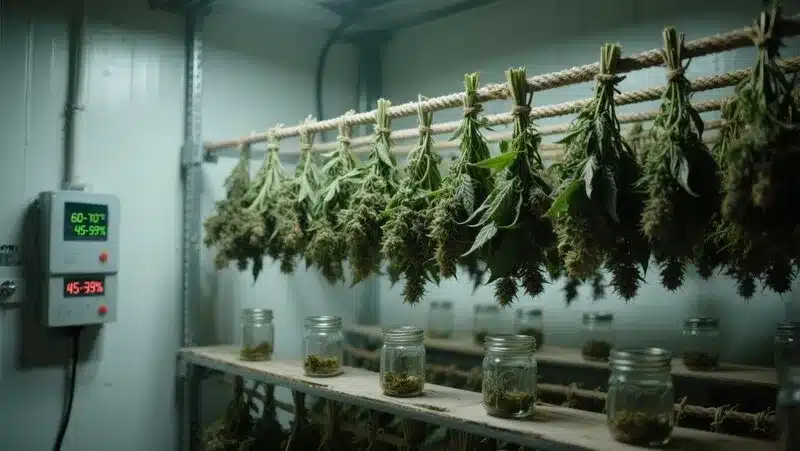
Techniques for Outdoor Drying
When it comes to drying cannabis outdoors, several techniques are at your disposal. Each approach may offer unique advantages, influenced by your local climate or the amount of cannabis you have. Understanding these methods can help you choose what fits your needs best.
For instance, hanging cannabis is one of the most popular methods. By cutting branches into manageable lengths and hanging them from a clothesline or rack, you’re allowing moisture to escape through the stems while keeping the buds intact. This method prioritizes airflow and helps in preserving the plant’s essential qualities.
Hanging the Plants
Hanging your cut branches upside down is likely the most traditional method employed by cannabis cultivators. This technique not only maximizes moisture loss through the stem but also keeps the buds intact and flavorful. Ensure there’s enough space between each branch to promote airflow; overcrowding can lead to moisture retention and potential mold growth.
Consider using twine or clips to secure the branches in your chosen area. A well-structured setup can greatly enhance the drying process, making it more efficient. Regular checks will help you ensure that all branches are drying uniformly, and you can adjust their positioning if necessary.
Using a Drying Rack or Net
If you prefer a more compact solution, a drying rack or drying net is an excellent alternative. These setups are designed to allow airflow on all sides of your buds, which accelerates the drying process while preventing any overlapping that could block airflow. Simply place your trimmed buds on the drying rack, ensuring that they are not touching each other.
Some drying racks are collapsible, making them easy to store when they’re not in use. This versatility is particularly advantageous for smaller growers or those who have limited space, allowing for efficient use of resources without sacrificing quality.
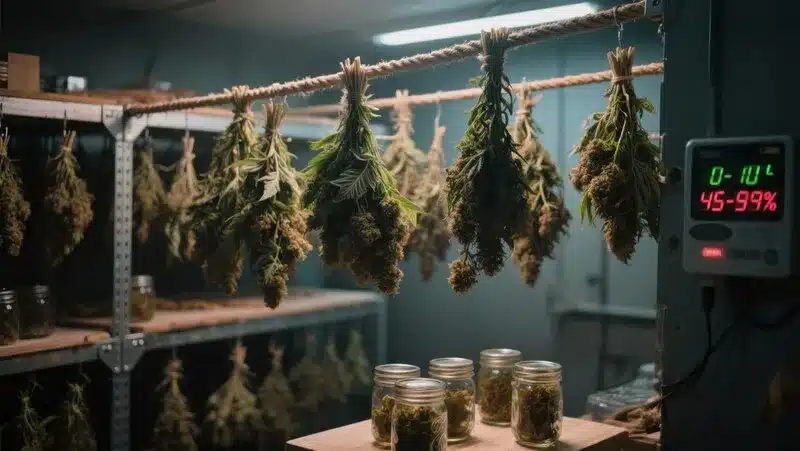
Signs of Properly Dried Cannabis
Knowing when your cannabis is adequately dried is critical for the best results. An easy way to gauge this is by checking if the stems snap easily when bent. If they bend without breaking, it’s a sign that more drying is necessary.
Furthermore, the buds themselves should feel dry but still maintain a slight stickiness. If they crumble into dust at the slightest touch, they may be overdried and have lost their desired characteristics. Regularly inspecting and feeling the buds will help you develop a better understanding of the optimal drying point.
Testing Humidity Levels
After the drying phase, it’s beneficial to use humidity packs to maintain desired levels during the curing process. Products like Boveda packs can effectively maintain your buds at the right moisture level, protecting quality and flavor post-drying. These small packs are a simple solution that can save you a lot of stress in the long run.
Additionally, using a hygrometer not only during the drying phase but also while curing can help you closely monitor humidity levels in your storage areas, ensuring optimal conditions for your cannabis flowers. This way, you can enjoy the best of what your harvest has to offer.
Curing After Drying
Once your cannabis is fully dried, curing follows as the next essential step. This process allows for the enhancement of flavor and aroma while stabilizing moisture levels within the buds. Curing is usually done in glass jars, where you place your dried buds and seal them, opening daily to let trapped moisture escape.
Typical curing durations can range from two weeks to several months, depending on your personal preference and the characteristics you wish to develop. In the end, properly cured cannabis yields a smoother experience and helps retain the essential oils vital for its delightful aroma and taste.
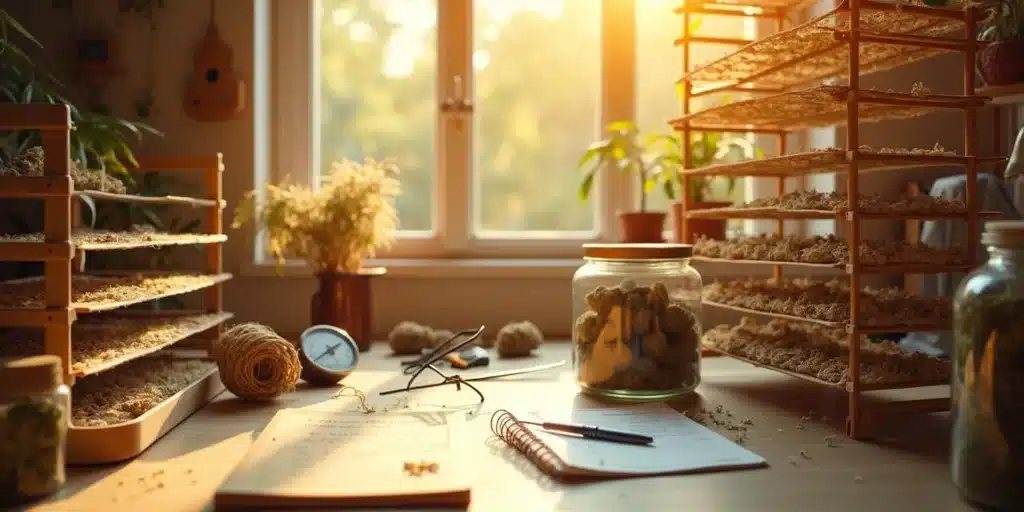
Strains Suited for Outdoor Growing
Some cannabis strains flourish particularly well in outdoor environments, making them favorable choices for those planning to dry their harvest outdoors. If you’re unsure which strains to select, here are a few that are renowned for performing exceptionally in the open air:
- Super Silver Haze: This uplifting and adaptable sativa-dominant strain is a fantastic pick for outdoor cultivation, showcasing excellent resilience and quality.
- Green Crack: Known for its balanced effects and unique flavor profile, this strain is suitable for both novice and experienced growers, thriving exceptionally well outdoors.
- White Widow: This iconic strain is both resilient and rewarding, producing robust buds that are a delight to cultivate outdoors, ensuring quality and quantity.
When choosing strains for outdoor growth, it’s essential to consider your local climate and ensure that the strain’s requirements align with what your environment can offer. Selecting the right strain can make a substantial difference in the success of your crop.
Common Mistakes to Avoid
While drying cannabis outdoors, several missteps can diminish your efforts. Here are some common pitfalls to steer clear of to ensure you achieve a thorough and satisfying drying process:
- Avoid drying in direct sunlight that can compromise quality and potency.
- Insufficient ventilation often leads to the growth of mold, which is disastrous for your harvest.
- Don’t rush the drying process; regularly check the moisture levels to prevent over or under-drying.
- Neglecting to properly cure your buds can result in a significant loss of flavor and aroma.
By keeping these considerations in mind, you can rest assured that your drying process will yield the highest quality cannabis possible. Patience and attention to detail will pay off and lead to a more enjoyable end product.
FAQs
How long does it take to dry cannabis outdoors?
Generally, the process of drying cannabis outdoors requires a span of about 7 to 14 days, contingent on environmental factors such as humidity and temperature. Regularly checking your buds will provide you clarity on when they’ve reached optimal dryness.
Do I need to trim my cannabis before drying it?
Trimming cannabis before drying is a common practice among growers. Removing excess leaves facilitates better airflow and reduces the chance of mold, leading to a superior final product. However, some growers prefer to hang entire branches before trimming to protect the buds from possible damage.
Can I dry cannabis in a damp environment?
It’s not ideal to dry cannabis in a damp environment. High humidity levels heighten the risk of mold, which can ruin your entire crop. If you find yourself in a particularly humid area, ensure proper ventilation and consider integrating a dehumidifier into your setup to manage moisture levels effectively.
What types of containers should I use for curing?
Glass jars are widely recommended for curing cannabis due to their ability to create an airtight seal without reacting with the plant’s compounds. Make sure the jars are clean and thoroughly dry before packing them with your dried buds, as even minor moisture can spoil the quality of your cure.
Should I refrigerate dried cannabis?
Refrigeration is generally not advised for dried cannabis; instead, it should be stored in a cool, dark place. A dedicated storage container or dark cupboard works well. The goal is to avoid fluctuations in temperature that could negatively impact the quality of your buds over time.


